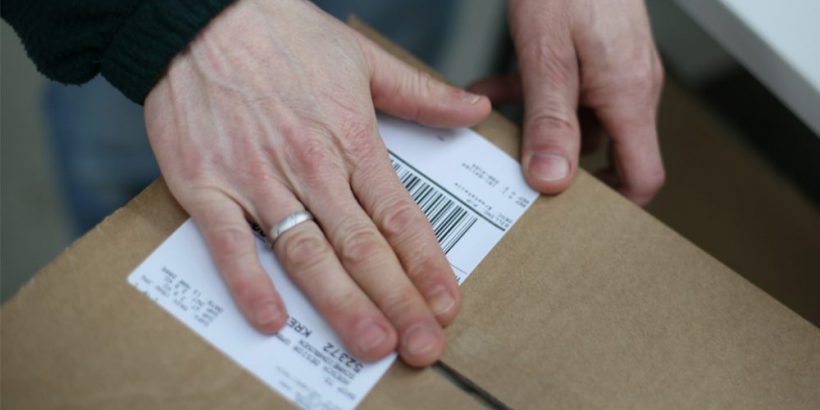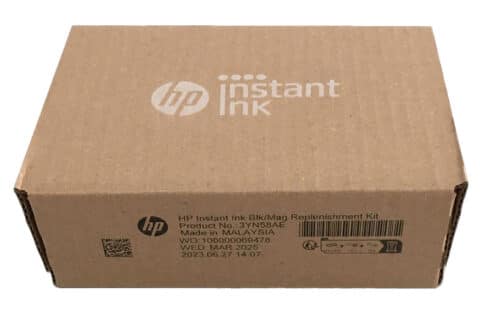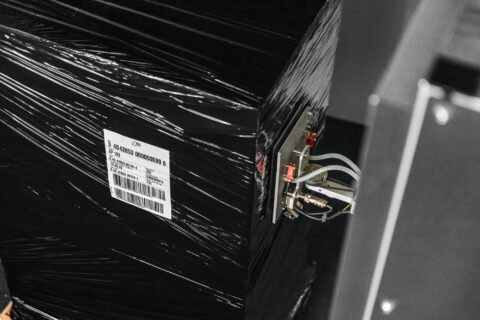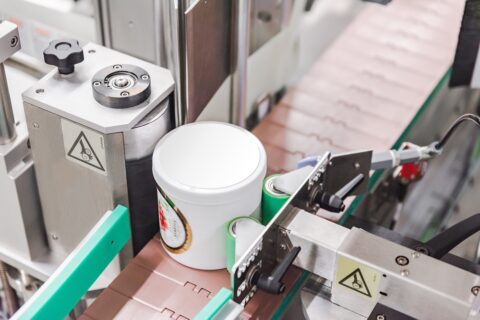Clever labeling, faster delivery!
Labeling and coding in the dispatch line has a considerable influence on the efficiency of logistics processes. It can help you save operating costs, reduce returns and improve customer service. If you label your shipping goods correctly, you can deliver faster and more reliably. As a result, your business remains competitive. This blog article showcases some best practices.
E-Commerce is the future
According to a study by McKinsey & Company, the e-commerce market will expand by 2030 five times faster than the retail market. E-commerce is booming and further growth is expected. As a result, both retailers and start-ups are relying more and more on the Internet to do business.
 German shoe retailer GÖRTZ won’t let customers wait long for shoes they have ordered: Within 24 hours, orders are shipped to one of their 160 stores or directly to the customer’s home. The labeling systems from Weber Marking Systems play an important role in their fully automated logistics.
German shoe retailer GÖRTZ won’t let customers wait long for shoes they have ordered: Within 24 hours, orders are shipped to one of their 160 stores or directly to the customer’s home. The labeling systems from Weber Marking Systems play an important role in their fully automated logistics.>> Read case study and watch video
An automated dispatch line has many advantages and can be implemented with relatively low effort. However, the automation of individual processes such as labeling can also be useful.
Preparing packages for dispatch more quickly

The transformation from being a shop owner or manufacturer to a shop operator faces several challenges. Apart from the appropriate platform, a functioning e-commerce logistics system is necessary to create positive customer experiences. Online customers are finally used to receiving ordered goods within a few days. McKinsey & Company forecasts that by 2025 the market for same-day delivery and instant delivery will account for around 20 percent of sales of standard parcels.
To make such services possible in cooperation with parcel services and other logistics service providers, markings such as barcodes are needed. Barcodes encrypt information in a very small space and can be automatically captured by scanners or cameras. In this way, they help to clearly identify the goods to be shipped in the warehouse and along the rest of the supply chain and assign them to the correct order. Thus, the dispatched goods can be processed quickly and error-free.
Labeling makes dispatch processes more efficient
Markings for internal and external logistics are usually applied to the packaging using self-adhesive barcode labels. The most important logistics labels include the following:
Dispatch labels / address labels
Dispatch labels contain all relevant information about the dispatcher, recipient and the details of the dispatched goods. They are required by the delivery service provider (DHL, Hermes, DPD etc.) to deliver the parcel. They usually also specify precise requirements for the dispatch labels to ensure error-free legibility along the entire supply chain. Otherwise, delivery delays and increased costs can occur.
Commission labels
Commission labels ensure that the picker can easily find and compile the partial articles of an order. Tight delivery deadlines can thus be better met. Based on a barcode label, goods could also be automatically channelled to certain sorting exits. At goods issue, they are used by employees to check the order for quality and completeness.
Warehouse labels
In conjunction with an inventory management system, warehouse labels help to manage inventory and make it easier to find goods in the warehouse quickly. They contain the article number, quantity information or best before dates of the stored goods. The label material should be adapted to the surface of the stored goods and to the conditions of the storage environment (e.g. cold, heat, humidity) to ensure good adhesion.
How to print and apply labels for shipping and more
The layout and content on barcode labels are created with the help of special label software. The label may contain text, numbers, barcodes and graphics. Variable label data can be loaded from a connected database (company software or Excel spreadsheet).



The label printer can be a stand-alone printer that allows you to print labels as needed and then remove and apply them manually. Which model you choose depends on the print volume, among other things. As an official trade partner for popular manufacturers such as Zebra, Sato and Epson, Weber Marking Systems can provide you with the optimal solution.
Significantly more efficient for higher parcel volumes is a print-apply labeling system: It combines label printer and label dispenser in one device and applies the label automatically to the packaging. There is a suitable labeling solution for every requirement and packaging type. An ideal entry-level model is Legi-Air 2050 print and apply labeler which can apply up to 30 labels per minute to different boxes. Companies with a higher throughput can choose a more powerful labeling system such as Legi-Air 6000, which applies labels to up to 2,250 products per hour.
If necessary, barcodes can also be printed using an inkjet printer. This saves label costs. You can read more about this in our blog post, where we compare the two processes in cardboard marking.
Marking of hazardous goods
Certain goods are classified as “dangerous goods”. These are substances and objects which may pose risks to the environment during transport. This applies, for example, to batteries, paints, fireworks and gas lighters. The so-called CLP Regulation lays down how hazardous substances and mixtures are to be marked. In some cases, the packages must be marked with defined symbols and safety instructions.
For the marking of dangerous goods on cardboard boxes, labels are often used. However, a cost-effective alternative can also be the large font inkjet printer, such as the new Markoprint integra PP 108: it enables fast, two-colour marking at a print height of up to 108 mm and is also low-maintenance. The method is not only more cost-effective, but also more sustainable, because no liner waste is produced. The ink cartridges are recyclable and only need to be replaced after several thousand codes. This could save up to 60% in total costs under certain circumstances.

Should you start with label automation?
Considering the rapid development in our digitalized world, companies and online shops should take a critical look at their processes. If addressing, labeling, weighing and checking still happen manually, they are often slow, error-prone and require a lot of staff. This leads to incorrect deliveries, more returns and higher costs.
Label automation, on the other hand, is more efficient. Orders can be processed faster and more reliably. A labeling system prints the appropriate dispatch information on the label and applies it to the correct product automatically. Incorrect labeling and the associated returns can thus be ruled out. This in turn contributes to higher customer satisfaction.
Looking for the perfect labeling or printing solution?
Weber Marking Systems is your partner for demanding labeling applications in all industries. We are happy to help you succeed! Ask us for more information and expert consultation:
Get in touch!


















